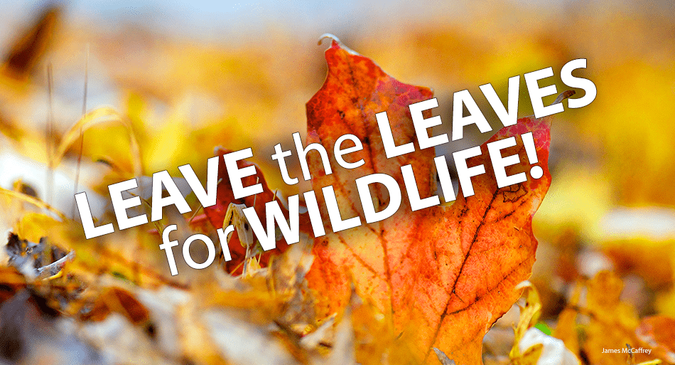
That's why it's so important to leave the leaves.
Wildlife Habitat
Turtles, toads, birds, mammals, and invertebrates rely on leaf litter for food, shelter, and nesting material. Many moth and butterfly caterpillars overwinter in fallen leaves before emerging in spring.
Other creatures take advantage of nature's ground cover too. The cocoons and chrysalises of Luna moths and Swallowtail butterflies cleverly camouflage themselves as dried leaves to blend in with the "real" leaves. The eggs of stick insects are disguised to look like seeds left among the leaves. Ants take these "seeds" back to their nests and bury them, where the baby stick insects hatch safely beneath the soil.
So many critters rely on leaves and other organic materials to protect them, their eggs, larvae, cocoons, and chrysalises from the elements during the winter. You can help wildlife by leaving a part of your lawn as nature intended with piles of branches and sticks, along with the leaves, so the wild things have a place to overwinter.
Nature's Fertilizer
It stands to reason that you don't have to leave the leaves exactly where they fell. They can be moved to wherever you want them. Chopping up the leaves is debatable. Some experts say cutting them up is fine, yet others say no.
In either case, leaves are beneficial to your lawn and garden. Gather them to use as mulch in the garden bed and around plants, trees, and shrubs to suppress weeds, retain moisture, and boost nutrition.
Spread a layer of leaves across your lawn. The organic material will feed the soil as it breaks down. If the layer of leaves is too thick and smothers the grass, rake the leaves out so you have a thinner layer.
Leaves can also be gathered into small piles to decompose. The resulting leaf fertilizer can be used as you need it to improve the soil. Mixing leaves, grass clippings, and other green materials make an excellent compost. Keep it moist and well mixed; it'll be great for your garden next spring.
Removing Leaves Pollutes the Air
There's another thing to consider before getting rid of the leaves in your yard. Gas-powered machinery collecting, hauling, and disposing of leaves emits massive amounts of carbon dioxide, needlessly adding to the CO2 already being spewed into the atmosphere.
People believe that organic waste will break down wherever it is dumped. Unfortunately, that's not true, especially when massive mountains of yard waste clog up the landfills. According to the U.S. Environmental Protection Agency, leaves and other yard debris account for 33 million tons of solid waste dumped annually.
With each day's addition to the mounds, the material becomes so compacted that air cannot circulate, depriving the accumulated debris of the oxygen it needs to decompose naturally. Instead, this organic matter releases methane, a greenhouse gas.
The smell of burning leaves has always been a pleasant sign that autumn has finally arrived. But, even though I cherish the memories of dodging the plumes of smoke, I no longer carry on this tradition. Instead, I've learned how leaves play such a vital role in our environment – plus burning emits air pollutants.
There's no way to eliminate unwanted leaves that isn't harmful to the environment unless you give the bags of leaves to someone who will use them in their garden or landscape as mulch or fertilizer.
Now that you are aware of how valuable those leaves covering your lawn genuinely are, make it a new tradition to leave the leaves. Then, when you step out the door this winter, think of all the activity going on right under your feet and be glad of the small part you played in making it possible.
 RSS Feed
RSS Feed

